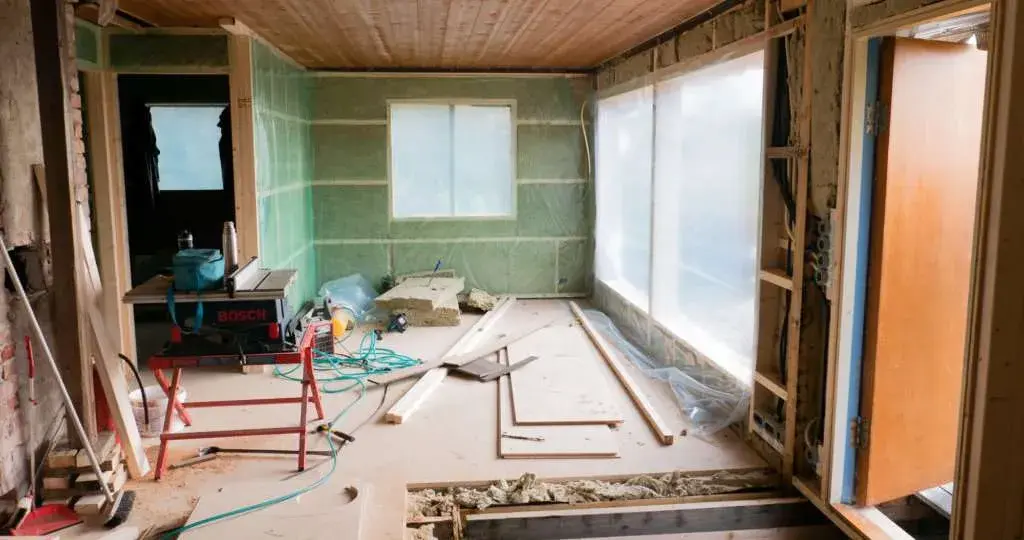
Internal wall insulation grants refer to financial assistance programs provided by government authorities to support homeowners. The roof protector is frequently met by it from the bottom of the ground floor up to the eaves level. It is often secured to the fences with screws or bonding. Its purpose is to provide a thick interior layer of Insulation to keep the building warm. It is a great way to keep your home warm and save money on energy bills. It is a cost-effective way to improve the thermal efficiency of your home and comes with a 25-year guarantee.
These materials reflect heat into the room rather than transferring it through the internal walls. The process of inner fence protection typically involves the installation of boards or stud fences lined with material. The thermal properties of these materials are excellent, allowing for optimal heat retention in living spaces.
The Different Types Of Internal Wall Insulation
It is a great way to reduce energy costs and improve the thermal comfort of your home. Existing fences can be installed with it, be it internally or externally, depending on the fence’s construction type. When installing an interior the choice of material is important. This layer prevents moisture from entering the fence and any existing water vapor from escaping. The three most popular materials for inner wall insulation are solid wall insulators and mineral wool.
Fire-resistant and lightweight properties make phenolic defense boards frequently used in interior applications. Quality building reduces energy use and lowers your building’s environmental impact. If you live in a busy neighborhood or near a highway or road, having is vital to minimizing the noise. The short-lived scheme underscored the capability of government intervention to influence fuel efficiency. It also offers several programs aimed at improving home power efficiency.
Many utility companies offer incentives to encourage power efficiency among their customers. These programs often include rebates or discounts on energy-efficient home improvements. In the UK, Gas Energy Trust provides grants to help homeowners improve their home’s energy efficiency. This includes funding for the inner fence insulator. Similar programs are available from other utility companies across the country.
Application Process For Internal Wall Insulation Grants
The first step involves researching available grants and determining eligibility. Identify applicants based on their interest in specific subsidy programs. The applicant completes an initial application form after confirmation of eligibility. This usually involves providing personal details, information about the property, and evidence of eligibility. Supporting documents may include proof of income, property deeds, or fuel bills. If the initial application is successful, we conduct a property assessment survey.

This assessment allows a tailored protector plan and a cost estimate. The applicant can get an offer of subsidy and an approval notification based on the evaluation. The offer will detail the funding provided, which may cover all or part of the costs. Applicants must review the terms and conditions and formally accept the subsidy offer. Authorized contractors must complete this to ensure adherence to the funding requirements.
The work will be completed within a specified timeframe, and a final inspection will be required after the completion to ensure the required standards are met. The costs are covered by the release of subsidy funds once approval is given, ensuring a thorough process for the defense. Its improvements are both effective and compliant with regulatory standards.
Benefits Of Internal Wall Insulation Grants
When installing the internal fence, the choice of fabric is important. By protecting your interior fences, you create a more comfortable living environment. No longer will you have to endure chilly drafts or work with uneven temperatures in other parts of your home. The inner wall distributes heat evenly, minimizing cold spots. It creates a cozy atmosphere for you and your family to enjoy year-round. One of the most significant benefits of the inner fence is its impact on energy consumption. By preventing warmth loss through the fences, your heating method will work more efficiently and consume less fuel.
This translates to reduced power bills, delivering long-term cost savings and reducing your carbon footprint. In addition to thermal benefits, an internal fence improves soundproofing within your home. The materials absorb sound waves, decreasing noise transmission from outside or between rooms. This can be beneficial if you live in a noisy neighborhood or have rooms where peace and calm are essential.
This reduces the potential for microbial contamination that could lead to respiratory diseases such as asthma. It eliminates the issue of trapped air pockets which can cause problems such as wood rot and problem infestations. Energy-efficient homes are more attractive to buyers, potentially increasing the property’s market value.
Conclusion
Internal wall insulation grants are a viable option for individuals looking to increase the energy efficiency of their homes. It reduces monthly heating and cooling costs. it is important to consider all aspects of this type of fabric including cost, maintenance requirements, climate appropriateness, and health. Most inner fence projects result in substantial energy bill savings over time, despite varying initial installation costs based on protected areas and chosen materials. Compared to an External protector, it is a cost-effective option.
